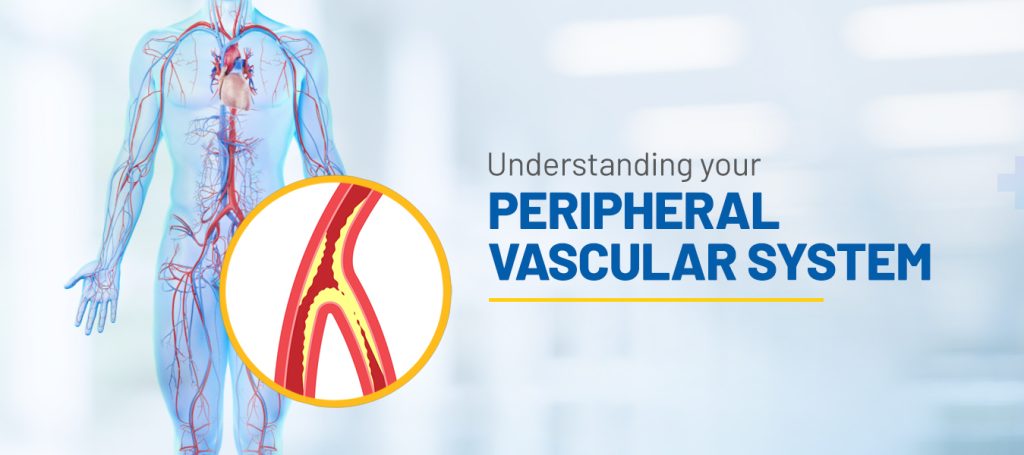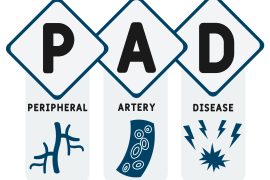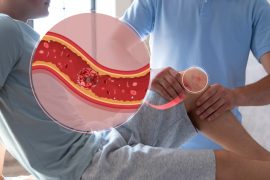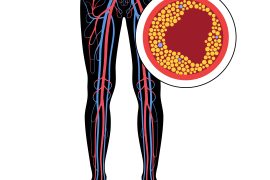Introduction
Blood vessels responsible for transporting blood throughout the body are the components of our circulatory system. Arteries, veins, and capillaries are the various blood vessels, each performing a specific function to regulate blood circulation, ensure the proper supply of oxygen and nutrients, and removal of waste from the body. Arteries supply oxygenated blood from the heart to different parts of the body, while veins return the deoxygenated blood from the rest of the body to the Heart. The capillaries act as a connection between the arteries and the veins.
Any blockage affecting the smooth blood flow in these blood vessels leads to various health problems relating to the heart, brain, and other body parts. Blood circulation disorder affecting the blood vessels and blood supply to –
- The heart is called Coronary Artery Disease
- The brain is called Cerebrovascular Disease
- The body parts other than the heart and the brain is called Peripheral Vascular Disease.
In this article, we will discuss Peripheral Vascular Disease and know the causes, symptoms, types, and treatment of the diseases.
What is Peripheral Vascular Disease?
Peripheral Vascular Disease is the condition of blockage and narrowing of the arteries and veins in the legs, arms, and body parts other than the heart and the brain. Peripheral Artery Disease (PAD) and Peripheral Vascular Disease (PVD) are often used interchangeably. However, there is a difference between the two. PAD is the narrowing of the arteries due to the accumulation of plaque (i.e., fats and cholesterol) on the inner walls of the arteries that impair the blood flow from the heart to different parts of body, which remain deprived of oxygen and nutrients. While PVD refers to the blockage and narrowing of the arteries and veins in parts of the body other than the heart and the brain due to various reasons, including the accumulation of plaque. Thus, PVD is an umbrella term.
Causes of PVD
The primary cause of PVD is Atherosclerosis. The build-up of plaque, i.e., accumulation of fats and cholesterol, can be in any artery in the body. The fatty substances and cholesterol that block the arteries and thereby reduce the blood flow are known as Atheroma. The condition of this plaque formation in the arteries is called Atherosclerosis. Due to narrowing, when the arteries cannot supply enough blood to the legs, it causes pain, cramps, aches, and discomfort during physical activity, but the same subsides with rest. This condition of pain in the legs is called claudication. Atherosclerosis can happen in any body part. But it may be noted that Atherosclerosis is caused in the arteries and not in the veins.
Besides, Atherosclerosis, the other responsible factors for PVD can be-
- Coronary Artery Disease – people with blocked arteries of the heart are at risk of developing PVD.
- Lifestyle – Lifestyle choices like smoking, sedentary living, poor eating habits, and drug use also play a significant role in developing PVD.
- Medical conditions– Medical conditions include diabetes, high blood pressure, high cholesterol, obesity, and kidney disease, which may also be the reason for one developing PVD.
- Injury – Injury to the legs and arms may cause the veins to narrow or swell, impairing blood flow from the legs or arms to the heart.
Symptoms of PVD
People with PVD may not experience any symptoms in the early stages. However, the symptoms depend on the blood vessels blocked and the extent to which they are blocked. Some of the symptoms that people affected with PVD may experience are –
- Pain with physical activity, i.e., cramps, aches in the hip, buttocks, calf, and thigh which subside with rest.
- Weakness in muscles
- Shiny and smooth skin
- Swelling, sores in legs that do not heal
- Numbness and coldness in toes, feet
- Reduction of pulses in feet
- Decolouration of the skin
- Severe burning
- Loss of hair in the affected area
Types of PVD
Depending upon the nature of damage caused to the blood vessels, PVD is categorized as Occlusive and Functional.
- Occlusive PVD
When there is physical damage to the vessels, resulting in structural changes in the blood vessels, it is the case of occlusive PVD. The following are examples of occlusive PVD-
Atherosclerosis– When the walls of the arteries thicken or harden over a period due to the accumulation of plaque, obstructing the smooth flow of blood in the arteries.
Carotid Artery Disease– When the large arteries (carotid arteries) on either side of the neck carrying oxygenated blood to the brain are narrowed. It is known as Carotid Artery disease or Carotid Stenosis.
Lymphedema– Lymphedema is a condition where the fluid in the lymphatic system builds up. The lymphatic system is the network of thin tubes and lymph nodes (small structures that filter harmful substances) running throughout the body to help eliminate body toxins and waste, fight against infection, and fuel the immune system. The body parts of the affected lymph nodes get swollen.
Abdominal Aortic Aneurysm – The part of the Aorta (the largest artery supplying oxygen-rich blood to all the body parts) that runs through the abdomen is called the abdominal Aorta. Aneurysm refers to the outer bulging (like a balloon or a bubble) on the blood vessel. This is caused due to weakening of the artery walls. An aneurysm may occur on the abdominal Aorta, which can be life-threatening with internal bleeding if there is a rupture in the artery.
Deep Vein Thrombosis (DVT) – DVT is when a blood clot is formed in the deep vein, often in the leg, arm, or pelvis, resulting in swelling in the veins, cramping, and redness in the affected area. If the clot breaks, its fragments can travel to any body part.
Buerger’s Disease– This is chronic inflammation in the small arteries of the extremities (the hands or the feet), causing a blood clot and blockages in the legs or arms.
Popliteal Artery Entrapment Syndrome (PAES) – PAES is a rare vascular condition where the muscles and tendons near the knee compress the popliteal artery (the main artery behind the knee), thereby restricting blood flow to the lower part of the legs. This usually is common among athletes.
A few other diseases caused due to blockage of arteries leading to the particular organ of the body are Intestinal Ischemic Syndrome which affects the gastrointestinal system, and RenalArtery Diseasecausing damage to the arteries supplying blood to kidneys .The term Ischemic refers to the lack of blood supply to a body part that deprives it of oxygen and nutrients.
- Functional PVD
When factors such as stress, cold atmosphere, smoking, or vibrating of machinery the blood vessels to widen or narrow, it is the case of Functional PVD. There is no physical damage or structural change in the blood vessels here.
Raynaud’s Disease– Exposure to cold temperature, anxiety, and emotional disturbances cause Raynaud’s disease, in which the blood flow to the fingers, toes, ears, etc., is impaired.
Chronic Venous Insufficiency (CVI) – CVI is a condition when the valves of the veins do not function properly and hence cannot transport blood back to the heart. The blood flows back to the veins instead of the heart, and this causes swelling or aching in the legs or feet. Varicose veins are twisted and enlarged veins visible under the skin caused by venous insufficiency.
Treatment of PVD
PVD affects cardiovascular health, and there is a high risk of life-threatening complications of heart attack and stroke if left untreated.
Healthy living with positive lifestyle changes like adequate physical activity, a proper nourishing diet low in fats, and smoking cessation can help avoid and reduce the risks of PVD.
Timely treatment is of utmost importance in reducing the severity of PVD. The treatment starts with your doctor recommending various tests like-
- Ankle Brachial Test, which measures the blood pressure at the ankle or the arms when the patient is at rest, or
- A treadmill test is conducted to check the pain threshold while the patient walks on the treadmill.
- Ultrasound Doppler to check the blood circulation in the arteries of the legs to ensure the presence of any blockage therein.
- Computed tomography angiography (CTA) and Magnetic resonance angiography (MRA) tests are carried out to detect clogged/narrowed blood vessels.
- Angiography- Angiography is conducted with the help of dyes that are injected into the arteries to detect the blockages.
Depending on the need and the severity of the condition, your doctor would suggest medications only or an interventional procedure with medications to treat PVD.
Peripheral Angioplasty is a minimally invasive procedure performed under local anesthesia to open the clogged artery and restore normal blood flow. A diagnostic catheter (a thin tube) is inserted through a tiny incision in the thigh. With the help of a Live X-ray, the operator can guide this catheter to the site of the blockage in the artery. A balloon is inflated inside the artery to press the plaque to the walls of the artery, making way for normal blood flow. A stent support may also be provided to the treated artery to keep it open. Once the stent is placed correctly, the incision is closed.
Conclusion
PVD is a slow and gradually increasing circulatory disorder. The symptoms are not noticeable at the early stages. However, those experiencing the symptoms must consult a doctor for timely and proper diagnosis and treatment. This is so because the major risks associated with PVD are heart attack or stroke complications which can be life-threatening as already mentioned above. In severe cases, this may also result in tissue death leading to limb amputation
Always follow a healthy lifestyle, and ensure timely and appropriate medical intervention and treatment to avoid and reduce the risks of Peripheral Vascular Diseases.





Comments are closed.